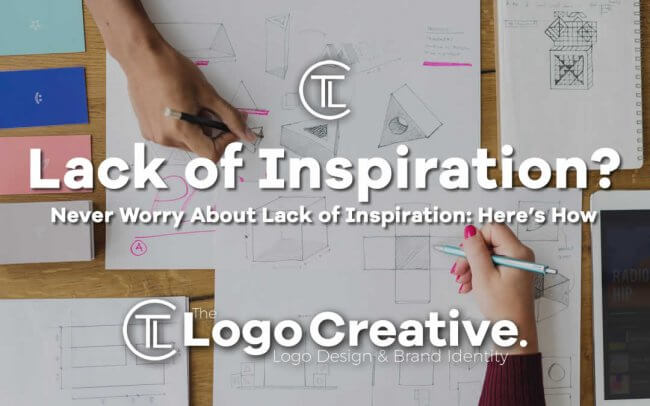Every designer has to face a creative drought sooner or later, which is not a surprise given the fact that they have to keep delivering fresh products day after day. But even though it’s a completely natural phenomenon, each designer wants to find a way out and gain new sources of inspiration immediately.
By definition, inspiration is the process of being mentally stimulated to do or feel something, especially to do something creative. The link between inspiration and creativity is consistent with the transcendent aspect of inspiration since creativity involves seeing possibility beyond existing constraints.
It seems like inspiration involves a lot of something that we cannot control, there are still many ways to break the chain and generate a brand new wave of quality ideas. In this article, we will explain to you why you should never worry about lack of inspiration – keep reading to learn seven ways to end the creative drought.

Table of Contents
Change Your Mindset
The first tip on our list is to defy the expected and embrace a new mindset because lots of agencies don’t allow designers to go outside the established boundaries. If you’ve been working for the same company or clients for a long time, you are probably facing the same requests and projects all over again.
This is never a good thing for a designer, so you better try to make a step forward in your career. What does it mean?
First of all, you should stop settling for the known. It doesn’t mean you must make a drastic change all of a sudden, but you do need to think about finding a different angle and approach. For instance, you could propose delicate improvements color palette- or spacing-wise to alter the existing models of work.
If this goes as planned, you can continue by adding more improvements later on. It basically means that finding inspiration becomes a long-term process, so you can keep refreshing your designs on a daily basis.
But Jake Gardner, a web designer at Australian Writings, says there are other options to test here as well: “One solution is to find a side job that allows you to express professional creativity in a different way. If this doesn’t work, then you might as well consider changing employer and finding an agency that encourages designers to work freely.”
Keep Learning
Web or graphic design is constantly changing, thus forcing professionals in this field to keep learning and discovering new solutions. While this may sound difficult at first, it actually helps a lot of designers to get out of the crisis and find inspiration for future projects.
What you need to do is research and identify the best learning sources. Focus on your specific niche for expert suggestions, but also feel free to check out alternative resources that can get the creative juices flowing despite being unrelated to your area of work (at least not directly).
The Internet is flooded with all sorts of textbooks, case studies, and online libraries. For instance, Coursera is one of the largest eLearning sources with high-quality courses for both the beginners and expert designers. This platform alone offers you more than a thousand design-related resources, so feel free to check it out if you get stuck with one of your projects.
Focus and Consistency
Getting out of the creative drought is not easy. It forces designers to invest a fair share of time and efforts into looking for answers and alternative work models, so it’s crucial to prepare for the whole process and plan your schedule.
One of the first things you should do is make a consistent plan for daily activities. You must spend at least 30 minutes a day contemplating your work, analyzing learning materials, and checking out competitors. This is supposed to give you fresh industry insights and drive inspiration in the long run.
However, you absolutely have to focus 100% on your work in order to gain inspiration. Eliminate all distractions that can disturb you, including social media, mobile phones, music, and so on. In our opinion, the best solution is to use productivity apps such as Stay Focused.
It’s a precious tool for individuals who can’t concentrate on everyday duties due to distractions like web browsing or Instagram. Using Stay Focused, you can restrict the usage of targeted apps and dedicate to your work without any disturbances.
Feel Free to Make Mistakes
As a designer, you should not be afraid of playing with your products, improvising, and making mistakes on the go. Your job is to be creative, which means you need to test new ideas and see how they look like in reality. This is, of course, impossible to achieve if you are frightened of experimenting.
It’s just the power of the good old “trial and error” method. It forces you to brainstorm different solutions and test each one, no matter how difficult or stupid it may seem. Doing so, you get to eliminate various options and filter through a bunch of interesting but useless practices.
At the same time, this type of mental exercise often leads to amazing discoveries. Playing with your ideas, you can bump into unforeseen solutions and create a standout design with just a little bit of editing. This is the whole point of making mistakes – you can eliminate underperforming products but also get the chance to discover brand new alternatives.
Mind Mapping
Mind mapping is another way to make yourself more productive and stop worrying about the lack of inspiration. If you don’t know the concept of mind mapping already, here’s a simple explanation: a mind map is a diagram that enables you to visualize ideas and identify relationships between different elements.
What makes the mind mapping technique good for designers facing creative blockage? Well, it’s the fact that mind maps allow you to organize design components, establish the most logical correlation patterns, and draw meaningful conclusions out of the scheme. Instead of relying on your imagination exclusively, you can visualize everything to create a much-needed distance and analyze things objectively.
As always, there are all sorts of mind mapping tools that you can use to ensure effortless execution. Some of the best options out there include:
- Coggle: This app is simple and easy even for first-time users.
- Mind Meister: A more advanced mind mapping tool, Mind Meister enables you to capture and visualize ideas with great precision and accuracy.
- Draw: Draw is a free platform with drag-and-drop features. It doesn’t have any mind mapping templates, which is perfect for experienced users who like to control every aspect of the process.
Use Idea Generation Apps
The year is 2019 so you can find a digital tool or app for all sorts of activities. In such circumstances, it’s not surprising to learn that there are dozens of idea generation platforms available online. Those apps can have a huge effect on your job if none of the previous tips turn out to work well for you.
The number of options is almost endless, but we want to point out only the most useful tools here:
- Evernote: Ideas come and go unexpectedly and it is fundamental to write them down instantly. Evernote is a nice mobile app that allows you to react quickly and remember important design concepts.
- BrainSparker: Sometimes all you need is the right question to encourage you to think differently. BrainSparker offers you a plethora of creative prompts that boost imagination and boost productivity.
- Brain Wave: If you are looking for a more alternative solution, then you might as well try Brain Wave. It’s an audio program that experiments with different frequencies to ignite users’ inspiration and creativity.
Take a Break
This is probably going to be your favorite tip on the list. If you’ve been working too hard for a long time, then it’s probably best to take a break and let your mind recover. This goes not only for annual vacation plans but also for daily work breaks.
You should not allow yourself to spend more than three hours without a pause – take a rest every once in a while, take a short walk, talk to your colleagues, or drink a cup of coffee. This is the only way to keep the highest level of inspiration and productivity in the long run.
Conclusion
Inspiration is the key concept in the career of a design professional. Without it, no designer can achieve success in business and build a wide base of loyal clients. But inspiration is a volatile concept and it simply disappears sometimes.
In this case, you need to find a way to deal with creative drought and return to the level of maximum productivity. We showed you seven ways a designer can boost creative thinking – make sure to use our tips and you will never have to worry about lack of inspiration anymore.
 Author Bio
Author Bio
Scott Mathews is a web designer at Rush Essay and a part-time content contributor. He loves writing about all design-related topics, but he is also very passionate about topics like self-improvement and personal productivity. He is a father of three lovely girls and an amateur long-distance runner.

